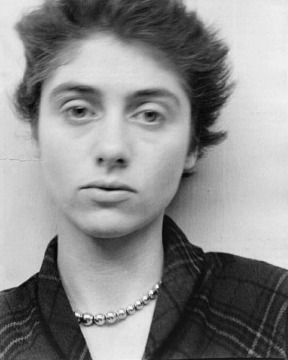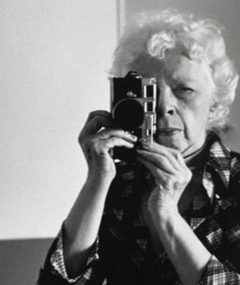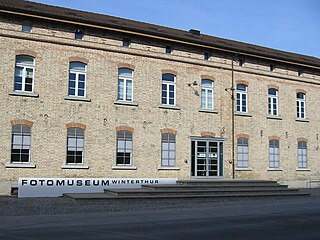
Diane Arbus was an American photographer. She photographed a wide range of subjects including strippers, carnival performers, nudists, people with dwarfism, children, mothers, couples, elderly people, and middle-class families. She photographed her subjects in familiar settings: their homes, on the street, in the workplace, in the park. "She is noted for expanding notions of acceptable subject matter and violates canons of the appropriate distance between photographer and subject. By befriending, not objectifying her subjects, she was able to capture in her work a rare psychological intensity." In his 2003 New York Times Magazine article, "Arbus Reconsidered", Arthur Lubow states, "She was fascinated by people who were visibly creating their own identities—cross-dressers, nudists, sideshow performers, tattooed men, the nouveaux riches, the movie-star fans—and by those who were trapped in a uniform that no longer provided any security or comfort." Michael Kimmelman writes in his review of the exhibition Diane Arbus Revelations, that her work "transformed the art of photography ". Arbus's imagery helped to normalize marginalized groups and highlight the importance of proper representation of all people.
Robert Frank was a Swiss photographer and documentary filmmaker, who became an American binational. His most notable work, the 1958 book titled The Americans, earned Frank comparisons to a modern-day de Tocqueville for his fresh and nuanced outsider's view of American society. Critic Sean O'Hagan, writing in The Guardian in 2014, said The Americans "changed the nature of photography, what it could say and how it could say it. [ ... ] it remains perhaps the most influential photography book of the 20th century." Frank later expanded into film and video and experimented with manipulating photographs and photomontage.
Robert Adams is an American photographer who has focused on the changing landscape of the American West. His work first came to prominence in the mid-1970s through his book The New West (1974) and his participation in the exhibition New Topographics: Photographs of a Man-Altered Landscape in 1975. He has received two Guggenheim Fellowships, a MacArthur Fellowship, the Deutsche Börse Photography Prize and the Hasselblad Award.

Juergen Teller is a German fine-art and fashion photographer. He was awarded the Citibank Prize for Photography in 2003 and received the Special Presentation International Center of Photography Infinity Award in 2018.
Loretta Lux is a fine art photographer known for her surreal portraits of young children. She lives and works in Ireland.

Paul Graham is a British fine-art and documentary photographer. He has published three survey monographs, along with 17 other publications.

Lisette Model was an Austrian-born American photographer primarily known for the frank humanism of her street photography.

Dayanita Singh is an Indian photographer whose primary format is the book. She has published fourteen books.
Cecilia Hae-Jin Lee is an award-winning Korean American writer, artist, photographer and chef. Lee is most known for her cookbooks and food writing. She was nominated for a James Beard award in 2006 and has won numerous other awards for her cookbooks. Lee has written for magazines, newspapers, and online publications. She also works as an artist in installation, photography, painting and drawing. Her work is displayed in many galleries and she created two public art pieces in California.
Rosalind Fox Solomon is an American photographer based in New York City.
Fazal Sheikh is an artist who uses photographs to document people living in displaced and marginalized communities around the world.
John Divola is an American contemporary visual artist and educator, living in Riverside, California. He works in photography, describing himself as exploring the landscape by looking for the edge between the abstract and the specific. He is a professor in the art department at University of California Riverside.

Fotomuseum Winterthur is a museum of photography in Winterthur, Switzerland.
Gail Thacker is a visual artist most known for her use of type 665 Polaroid positive/negative film in which her subjects — friends, lovers, the city — become intertwined with the process and chemistry of her photos. She attended the School of the Museum of Fine Arts at Tufts and has lived and worked in New York City since 1982. She is part of a group of artists called The Boston School.

Shirana Shahbazi is an Iranian-born photographer who now lives in Switzerland. Her work includes installations and large prints of conceptual photography.
Bertien van Manen is a Dutch photographer. She started her career as a fashion photographer, after having studied French and German languages and literature. Inspired by Robert Frank's The Americans she travelled around, photographing what she saw. She had her first exhibition in The Photographers' Gallery in London in 1977 and since then her work has been exhibited in the Museum of Modern Art, New York, the Maison Européenne de la Photographie in Paris, the Stedelijk Museum Amsterdam and the Fotomuseum Winterthur. Van Manen's work is found in major public collections.
Jitka Hanzlová is a Czech photographer, mostly known for her portraiture.
Jörg Sasse is a German photographer. His work uses found images that are scanned, pixelated and manipulated.
Sanna Kannisto is a Finnish photographer who is noted for her photographs taken in rainforests and for her studio photographs of birds.
Jung Yeondoo is a South Korean visual artist who works primarily with photography, videography, and sculpture. He has a studio located in Seoul. He was the youngest recipient of the "Artist of the Year" award by the National Museum of Contemporary Art, Korea in 2007. He has been selected as the artist featured in the MMCA Hyundai Motor Series 2023. He has shown work in numerous museums and biennials worldwide like the 51st Venice Biennial and the Liverpool Biennial in 2008. His work is featured in public and private art collections throughout the world such as the Fondazione Cassa di Risparmio di Modena, the Rhode Island School of Design Museum and the Museum of Modern Art in New York.







